Emerging from the thick bracken, my legs are scratched from thistles and my hat is coated in a veil of sticky spider webs.
I don't recall the approach to bushranger John Gilbert's grave being this overgrown on my previous visit, but that was way back in the middle of the 1980s drought, not after three consecutive La Ninas.
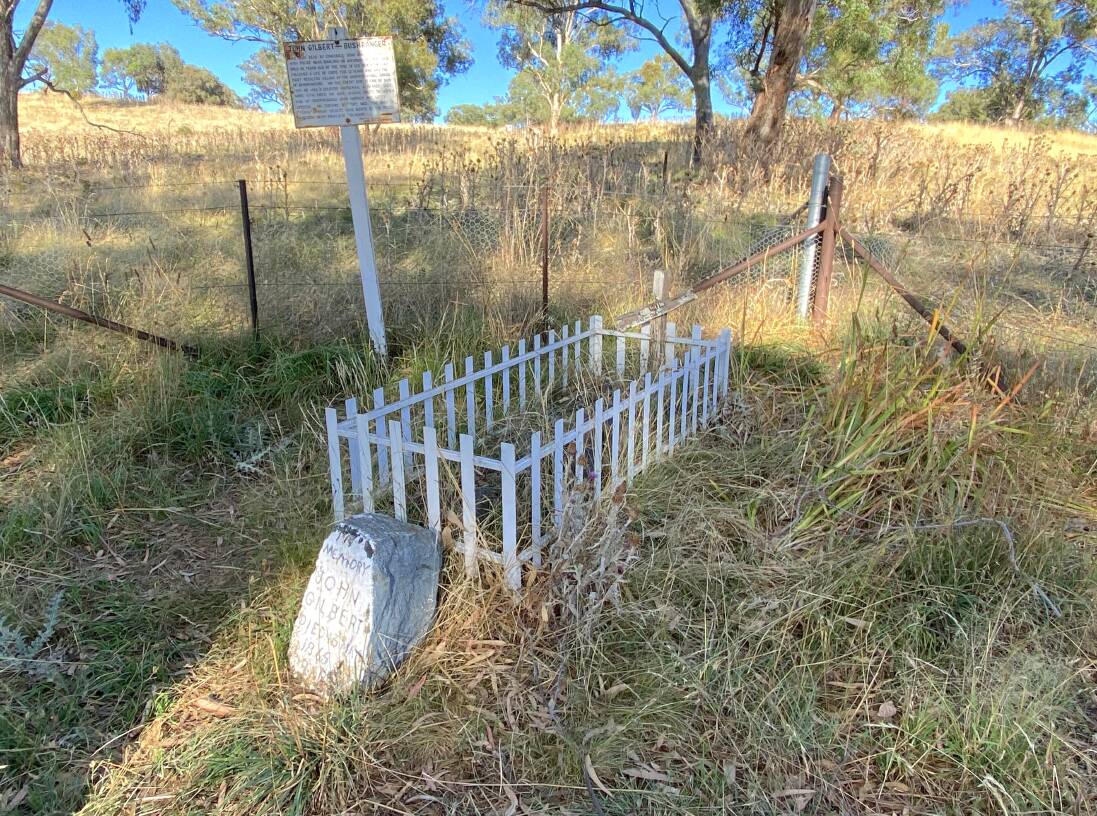
Positioned in a paddock above the busy Burley Griffin Way on the outskirts of Binalong, and partially shaded by a mature gum tree, it's a classic bush grave. A five-metre-wide and 100-metre-long slither of land leading up from a road reserve is cordoned off with a wire fence and the grave itself, covered with small stones, has a dilapidated wooden cross at one end, and rudimentary bush rock headstone at the other.
Despite its current unkempt status, there's no missing where you are. You are greeted by two large information panels which detail the life and times of one of our region's most infamous outlaws, a colourful modern one at the base of the stairs that lead up from large parking bay, and another, older black and white one, standing sentinel over the grave.
However, the final resting spot of "Flash Johnny" or "Happy Jack", as he was often called due to his youthful exuberance, hasn't always been so well marked.
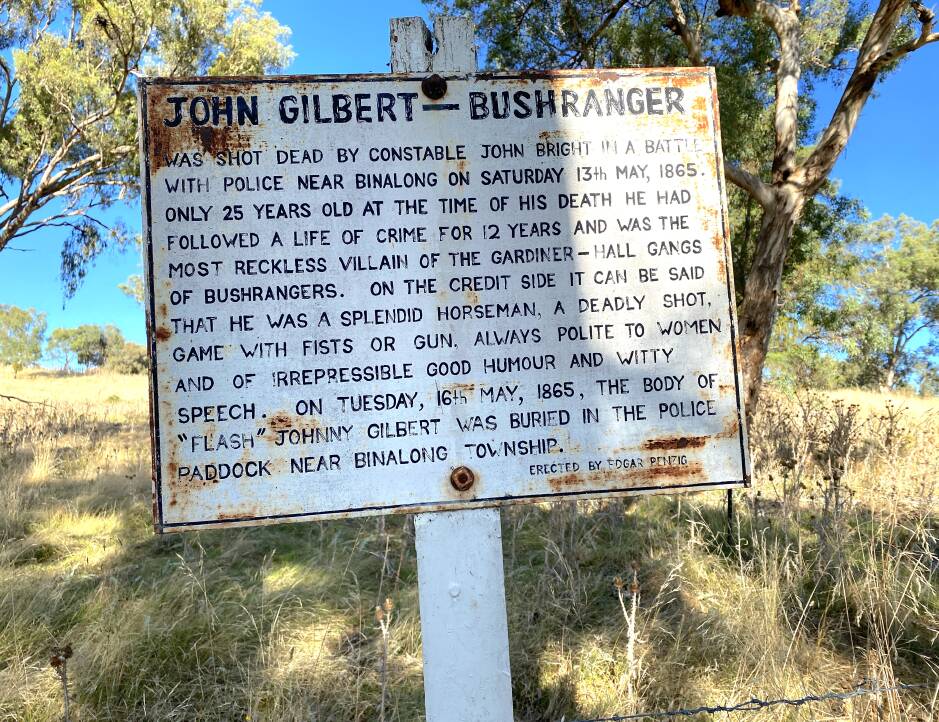
After he was shot by police at nearby Billabong Creek on May 13, 1865, Gilbert's corpse was hauled back into Binalong where a death mask was cast, and an autopsy undertaken.
Word of his death travelled fast and spurned by morbid curiosity, some people travelled as far as 30 miles (a long ride on horseback) to gawk at the dead outlaw.
An inquest was promptly held, and just three days later in front of the local undertaker and a handful of policemen - including Constable Bright who was responsible for the fatal shot - Gilbert was buried in the Binalong police paddock.
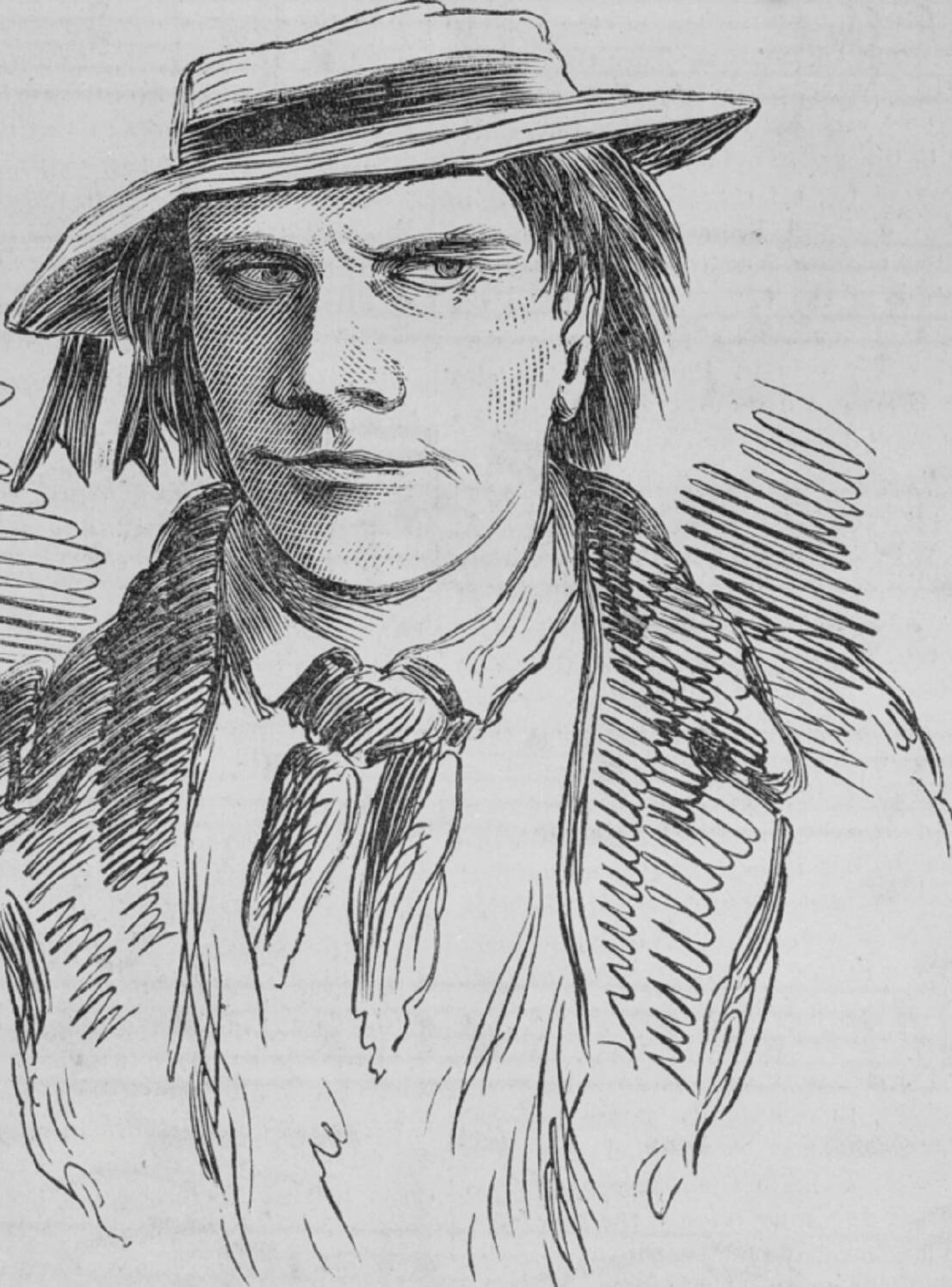
It was here in this lonely hillside tomb that Gilbert's body was destined to lay for eternity, with few, if any, visitors to pay their respects. He was, after all, a criminal responsible for hundreds of crimes, including the brutal murder of Sergeant Parry near Jugiong just six months earlier.
However, any chance of resting in eternal peace ended when in 1894 Banjo Paterson immortalised Gilbert in How Gilbert Died. In his carefully penned ballad, Banjo drew attention to the fact that at the time there was no fence to protect Gilbert's grave from wandering stock, nor was there a headstone.
There's never a stone at the sleeper's head,
There's never a fence beside,
And the wandering stock on the grave may tread
Unnoticed and undenied;
But the smallest child on the Watershed
Can tell you how Gilbert died.
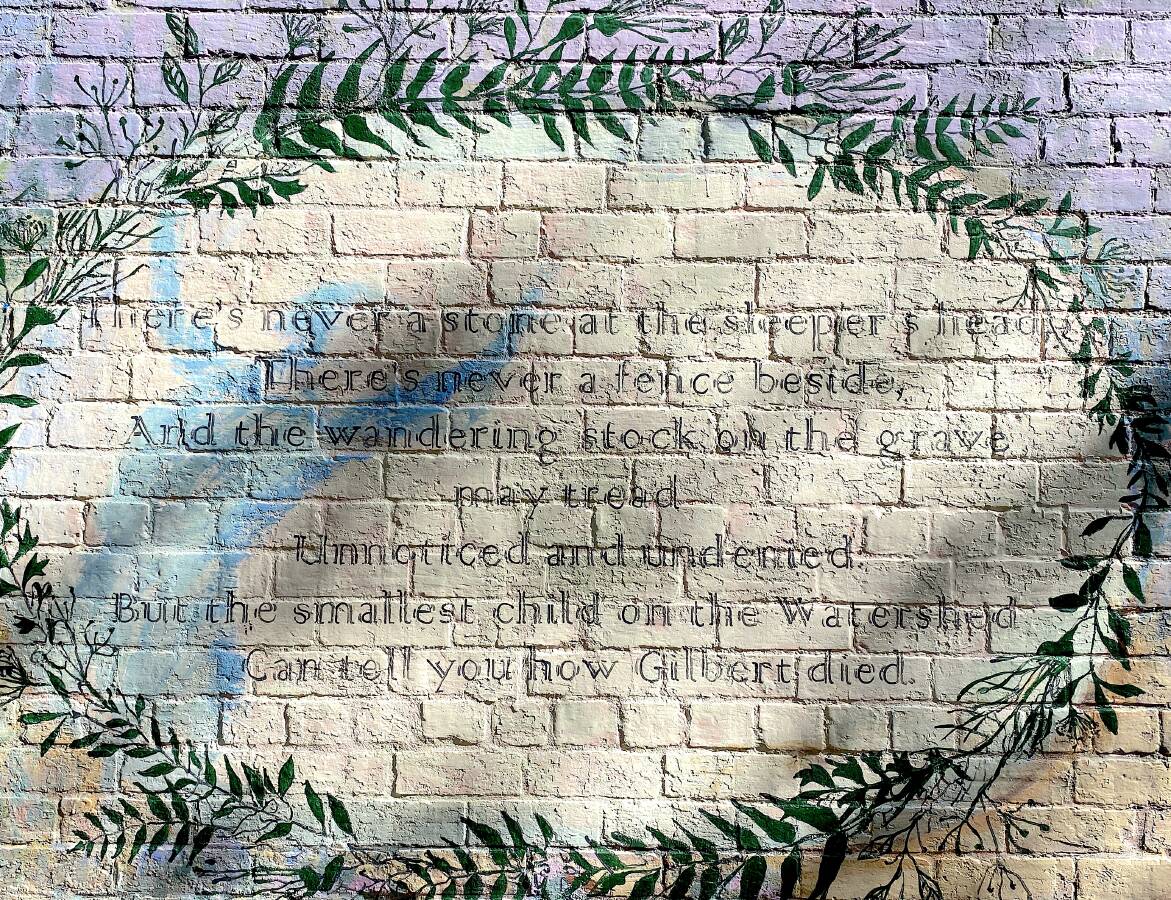
The popular poem resulted in renewed interest in Gilbert's reign of terror and as reported by bushranging afficionado Edgar Penzig in Happy Jack: the definitive history of the bushranger John Gilbert, by around 1900 "someone had erected a cement cross and base at the end of the grave ... with painted inscription".
The grave was now a macabre tourist attraction, especially for those in passing coaches.
In fact, when celebrated writer and journalist Dame Mary Gilmore (yes, she's the one on the $10 note) visited the grave in 1916, she reported in her column in The Australian Worker (November 30, 1916), "a path is beaten through the grass by the feet of those who go there rememberingly".
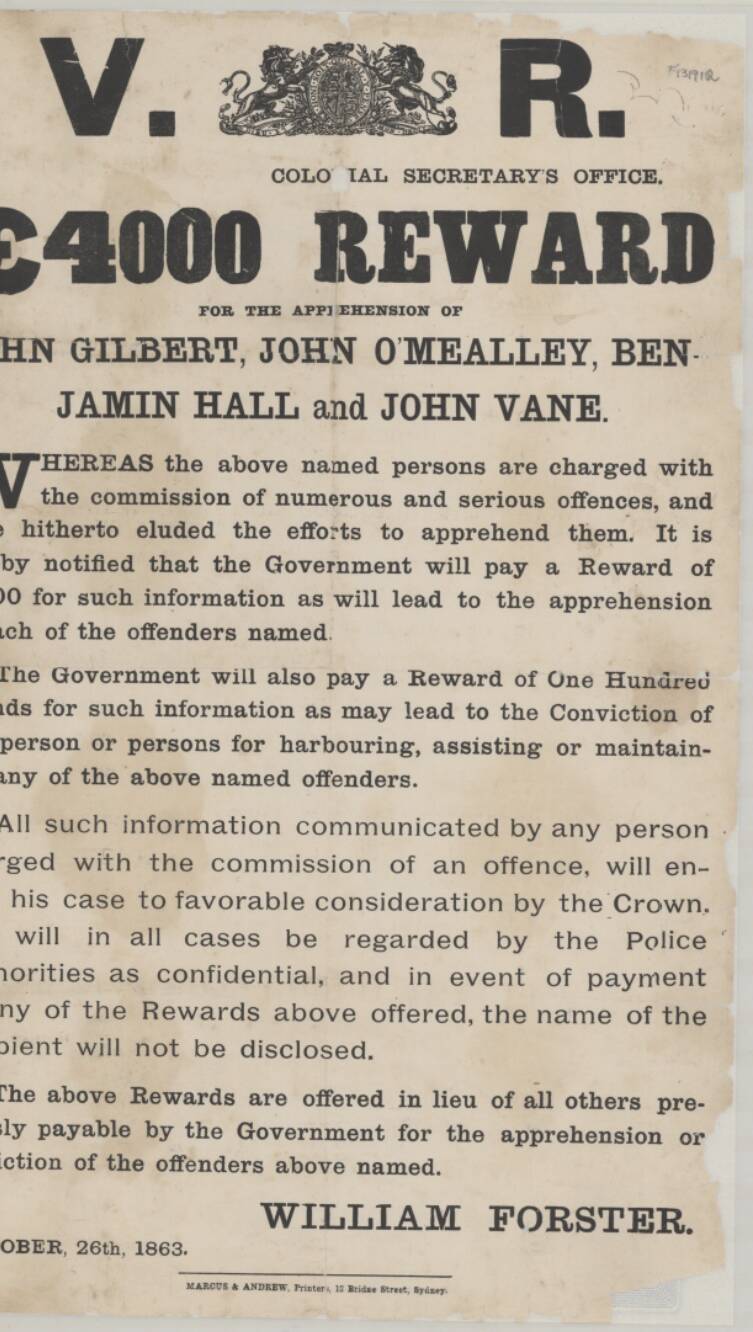
Intriguingly, while placing "wildflowers and a posy of roses" on the grave, Gilmore noticed something "out of place" about the date of death that by then had been crudely carved on the headstone over the painted inscription.
Gilmore reveals that she'd been led to believe that Gilbert had once nursed her as a baby so was somewhat perplexed to discover "the stone at the grave showed he had died in 1864, the year before I was born!"
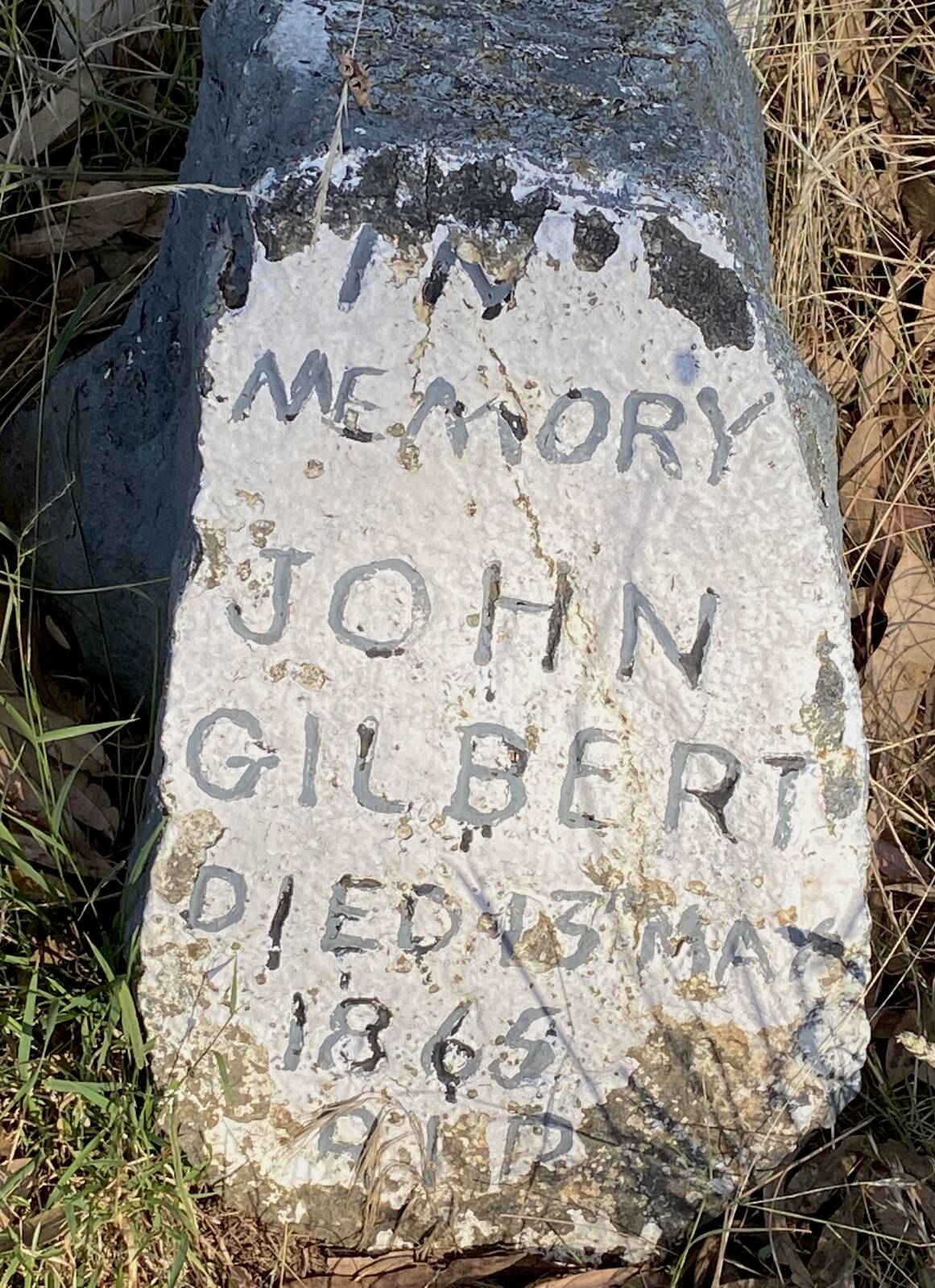
Penzig suggests that the "the person who put up the stone got the death date mixed up with that of Sergeant Edmund Parry, who was killed by Gilbert in 1864". Furthermore, Gilmore must have been misled about her supposed gun-toting babysitter for she wasn't born until August 6, 1865, three months to the day after Gilbert's corpse was lowered into his bush grave.
Today, just about everyone who visits Gilbert's grave (now inscribed with the correct date of his death) snaps an obligatory photo on their smartphone, however photographs of the grave from the early 1900s are few and far between. So, imagine the excitement, when, amongst a collection of over 100 glass plate negatives recently donated to the Berrima & District Historical Society, historian Linda Emery noticed one plate featuring two men and a dog standing beside Gilbert's grave.
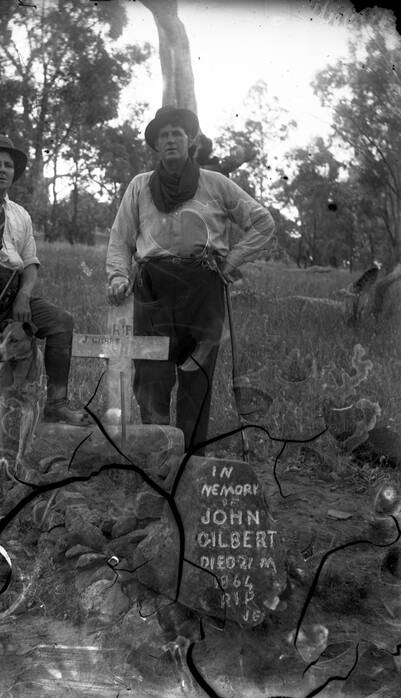
"The collection came from the late Emil Hill, who, with his father Charles and two brothers, founded the Mittagong Star newspaper in 1922 and we believe the photos were taken on a trip in the country around that time," Linda explains.
"It's a real treasure and one of the earliest photos where the headstone is carved with the incorrect date," states Linda, adding "bushranger buffs will salivate over it."
They certainly will.
Pushing up daisies: Gilbert's grave is located about 1km to the north of Binalong on the Burley Griffin Way. Binalong is about 75-minutes' drive from Canberra via the Barton Highway.
A grave end for policeman after shoot-out
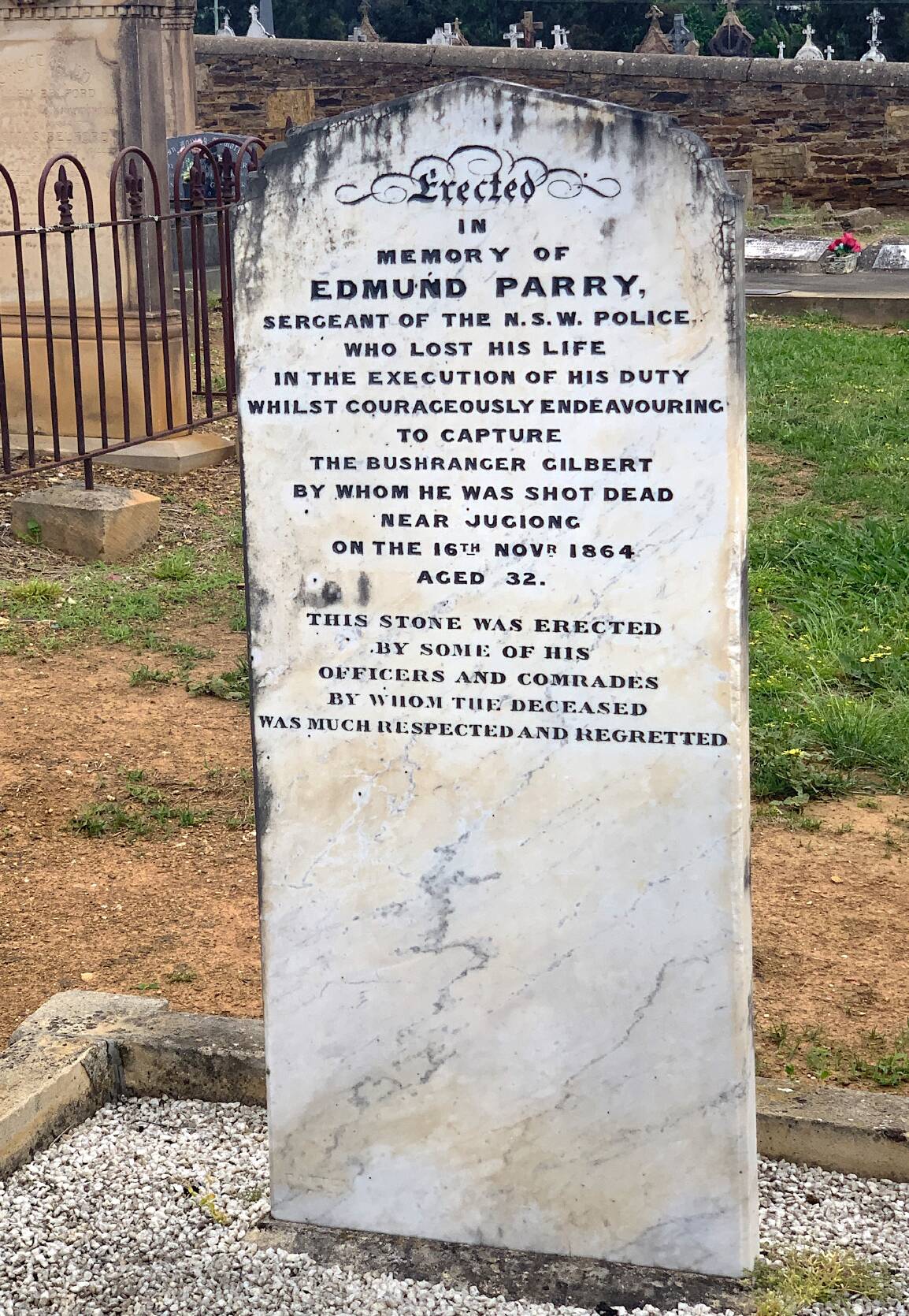
Posy conundrum: Just as Mary Gilmore did in 1916, visitors to Gilbert's grave continue to bring flowers. I wonder how many people place flowers on the grave of poor Sergeant Parry, the policeman that Gilbert gunned down while robbing the Gundagai-Yass mail coach, near Jugiong on November 17, 1864? Apparently, Parry and another trooper exchanged shots with the gang until Parry had discharged his last barrel. When called upon by Gilbert to surrender, Parry infamously announced he would prefer to die first. Gilbert shot him dead. For the record, Parry is buried in North Gundagai cemetery, next to Senior-Constable Webb Bowen who was shot by bushranger Captain Moonlite 15 years later at Wantabadgery (between Gundagai and Junee).
A sign for the times: Alongside Gilbert's grave is a sign erected in the mid-1960s by the late Edgar Penzig (1929-2010). Regular readers might recall it was Penzig who was responsible for a similar sign on Braidwood Road near Goulburn where, in February 1865, Gilbert accidentally shot his horse dead and had to seek shelter behind a fence post during a raid on Springfield Station. While acknowledging Gilbert as "the most reckless villain of the Gardiner-Hall gangs, Penzig also notes, "on the credit side, it can be said he was a splendid horseman, a deadly shot, game with fists or gun, always polite to women and of irrepressible good humour and witty speech".
Did You Know? Gilbert was present on January 26, 1865, when Constable Nelson was killed by fellow Hall gang member John Dunn at what is now the Bushranger Hotel in Collector. Dunn was also in Binalong when Gilbert was fatally shot by police but managed to escape. However, Dunn wasn't on the run for long. He was captured in January 1866 and hanged three months later at Darlinghurst jail.
WHERE IN CANBERRA?

Rating: Easy
Cryptic Clue: In the shadow of a camel
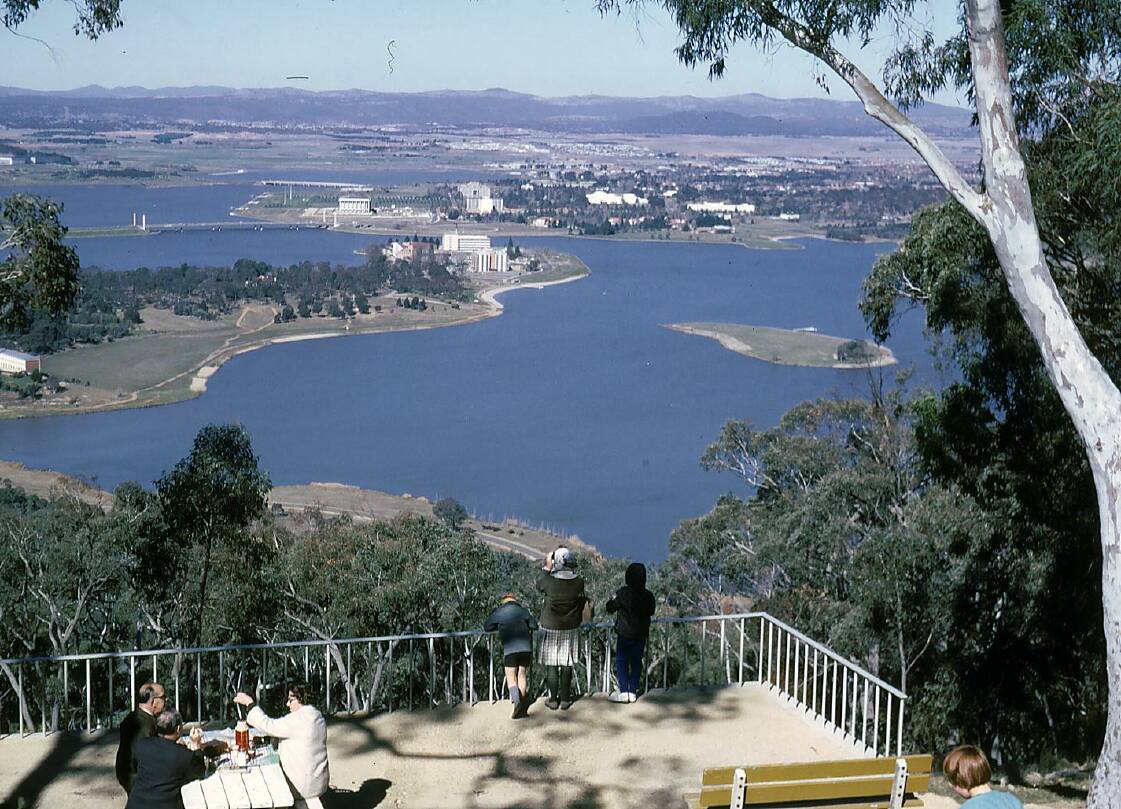
How to enter: Email your guess along with your name and address to tym@iinet.net.au. The first correct email sent after 10am, Saturday February 25 wins a double pass to Dendy, the Home of Quality Cinema.
Last week: Congratulations to June McKenzie of Fisher who was first to identify last week's photo as a 1967 (don't worry, you didn't have to guess the year!) view from the lookout over Lake Burley Griffin atop Black Mountain. June just beat Jane Malcolm, Terry Sheales, Roger Shelton, and Tony May to the prize.
The historic vista threw several readers as the photo was taken well before Parkes Way was constructed along the lake's northern foreshore, and before trees blocked the current view from the same lookout. Oh, the fact I cropped the photo last week to make it trickier probably didn't help either. Today, I've included the photo in its entirety.
Meanwhile, the image brought back memories for Kitka who with some friends held a "fully formal dinner there in the 1970s. "It was in summer I imagine, as it was warm and light in the evening," recalls Kitka. "We all dressed up in formal wear, had snowy white tablecloths, real glasses and china etc." According to Kitka, "it was just for a lark - and we loved seeing astonished looks on the faces of passing motorists and the others sharing the space. It was great, clean fun."
I bet it was.
I once indulged in a similar formal dinner atop Mt Ainslie but sadly the photos have gone missing. However, several years ago, I was sent this photo (below) of a group of hikers at the top of "The Castle" in the Budawangs.
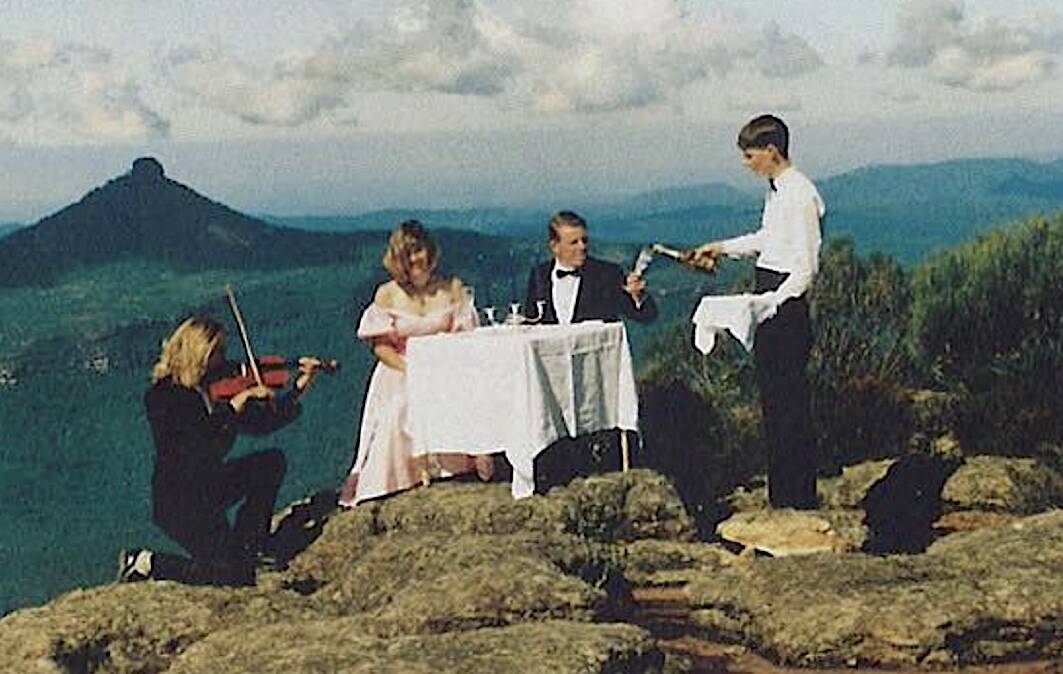
For the uninitiated, "The Castle" is no easy hike. It's a 13km challenging and steep (almost 1km gain in altitude) trek involving the use of fixed ropes. Let's just say you wouldn't want to indulge in too many glasses of bubbly at the top. And I certainly don't envy the poor fella who lugged up that violin. Despite my best efforts, I'm yet to uncover the identity of the daredevils in this photo. If you recognise anyone, please let me know.
CONTACT TIM: Email: tym@iinet.net.au or Twitter: @TimYowie or write c/- The Canberra Times, GPO Box 606, Civic, ACT, 2601
We've made it a whole lot easier for you to have your say. Our new comment platform requires only one log-in to access articles and to join the discussion on The Canberra Times website. Find out how to register so you can enjoy civil, friendly and engaging discussions. See our moderation policy here.







